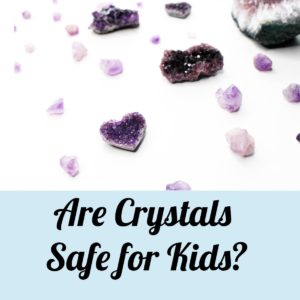
Crystals are fascinating to both children and adults alike. Though crystals are not often referred to as a toy in the traditional sense, there is great value kids can get from playing with crystals.
Note: This post may contain affiliate links. What does this mean?
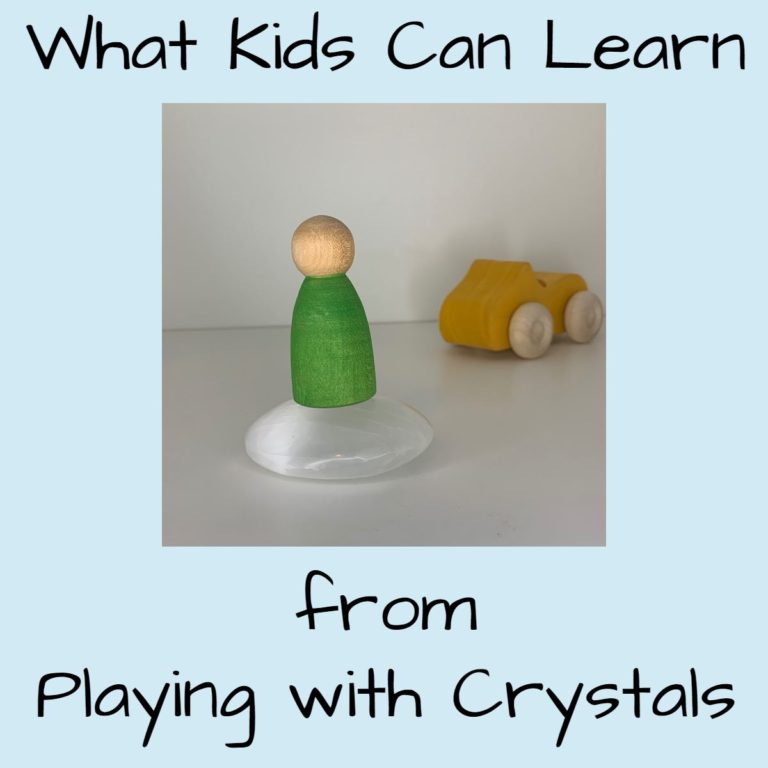
Crystals are simply minerals. All crystals, if they are naturally occurring, are minerals.
The word mineral comes from the Latin word minerale, which translates to “obtained by mining”. In geology, a mineral is a naturally occurring solid substance. Each has a specific chemical composition, made of either one or more elements, arranged in a regular three dimensional pattern, producing a crystal structure.
Crystals are often lumped in the same category with rocks, but there is a distinction. Similar to crystals, rocks are also an organic material. Rocks can me made up of a variety substances including multiple minerals, but rocks are not minerals in and of themselves.

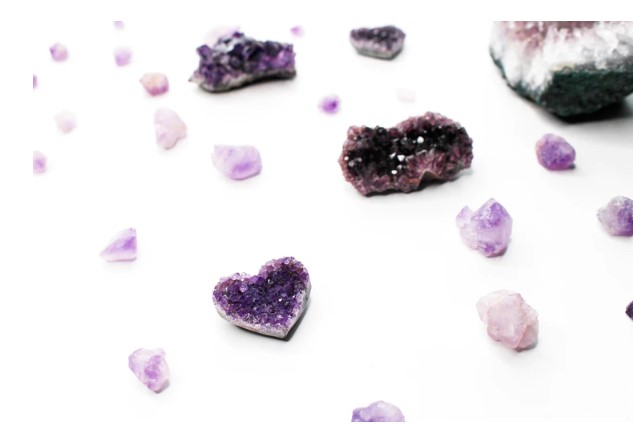
There are hundreds and hundreds of different kinds of crystals. They come in a variety of shapes, textures and colors.
There are multiple ways kids can play with crystals – and multiple things that can be learned in the process. Crystals are an open-ended “toy”. There is no “right” way for kids to play with them and they can be played with in countless ways. Here’s a list of several activities kids can do with crystals that are engaging and educational. Keep in mind the age and maturity level of your specific child. Each activity listed is not appropriate for every age.
Safety Note: Before you give crystals to your children to play with, do your research. There are several safety concerns that you need to take into account. Check out our article, Are Crystals Safe for Kids? This is a great place to start!
There are so many math concepts that can be brought to life with crystals, no matter what age your child is! With younger children, you can count them, discuss their shapes, discuss their weights, order them by size or create patterns, just to name a few. Older children can use crystals as visual aids to help with addition, subtraction, multiplication and division. You could also make numbers or shapes using crystals.
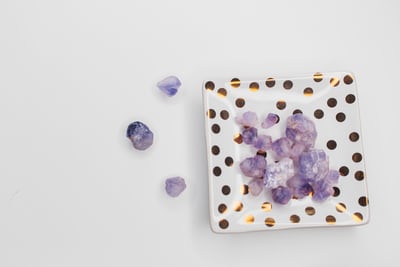
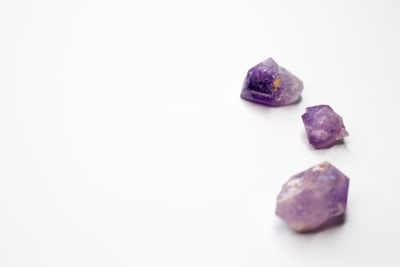
Crystals come in so many beautiful colors. This is a perfect opportunity to talk about colors with your children. Crystals also come in a variety of textures that children can learn from. Just proceed with caution if you have crystals with rough edges!
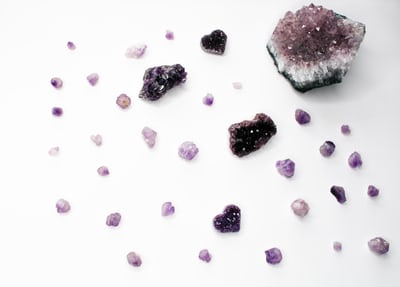
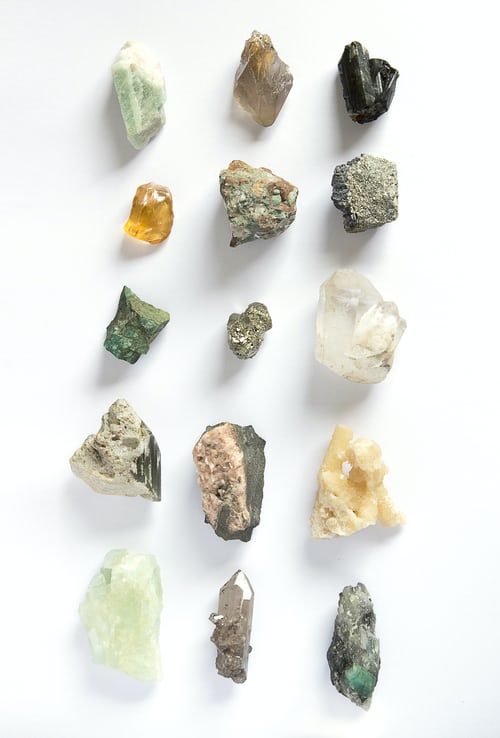
Crystals make the perfect addition to your child’s arsenal of open-ended toys for imaginative play. Imaginative play is so important. It helps foster cognitive, language and social skills. Not to undermine the importance of imagination and creativity in and of itself. Unsurprisingly, research by UC Berkeley psychologists suggests that creativity generally declines as we age.
Most children are drawn to crystals and will find endless ways to play with them. Here, our toddler is pretending the crystal is food (along with a wooden stone/pebble and a wooden ball):
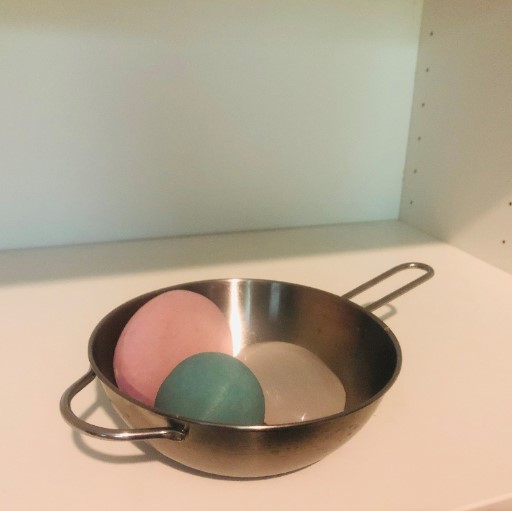
Crystals are also great for small world play. What is small world play? Small world play is imaginative play with small toys – think small dolls/people, cars, animals, etc. Similar to imaginative play, there are so many benefits to small world play. It helps children process and recreate personal experiences. It also fosters imagination, language skills, as well as fine motor skills, just to name a few. Crystals can be used in a variety of ways during small world play. Perhaps your child will simply pretend the crystals are just crystals in their play. They can have their dolls go searching for crystals. More than likely however, crystals will be used in a more-open ended manner. Perhaps your child will use it as a chair for a peg doll, food for an animal, or pretend it’s an animal in and of itself! The possibilities are endless, which is why we are such of a proponent of loose parts play and open-ended play.
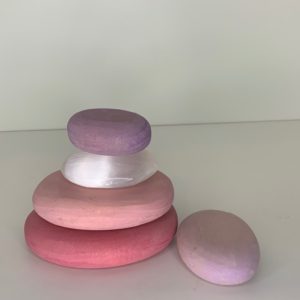
Crystals are also the perfect addition to sensory bins. Sensory play is simply play that stimulates a child’s senses. There are so many benefits to sensory play. In addition to sensory development, sensory play helps build cognitive, language, visual spatial and emotional skills.

Cleaning is a good practical life skill for kids to engage in, even at a young age. Polishing is a related life skill that is often practiced in Montessori settings. One things kids can do with their crystals is wash or polish them. Other than this being a practical skill, polishing and cleaning help build concentration, sequencing and fine motor skills.
Just know that some crystals should not get wet! Some crystals will just dissolve or break if exposed to water, while others can emit dangerous toxins! Also, do not use hot water, as this can cause some crystals to break and shatter! Click here to read more: Are Crystals Safe for Kids?
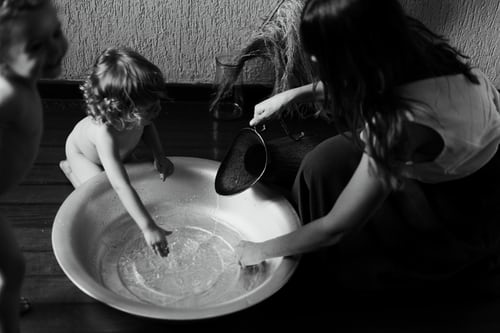
Ever heard of a worry stone? School counselors and therapists often offer worry stones to children who are dealing with anxiety, stress, or other related issues. A worry stone is simply a smooth rock/stone/crystal that the child can hold and rub when feeling anxious. The act of rubbing the worry stone acts as a coping mechanism. A worry stone is a great tool to help children practice mindfulness. A worry stone can help children self-sooth and center themselves. Many children report feeling calmer when using their worry stone. Another nice thing about worry stones is that they are small and portable. They can be taken on the go, can fit in your pocket and can be used in a discrete way if desired.
For children who can read, pairing crystals with educational books brings learning about crystals to life! Children can read and learn about various types of crystals and their properties. Children may enjoy matching their crystals to ones in the books. Just be careful – books about crystals may inspire your child to collect crystals 😉
We have this book, My Book of Rocks and Minerals. The description says it’s “Perfect for budding geologists ages 6-9,” but we bought it to read with our preschooler. This colorful reference book delves into more than 100 different types of rocks, minerals, gemstones, crystals, and fossils. Aside from all the facts, it’s full of colorful pictures that our preschooler enjoys looking at. We are hoping to cultivate an early interest in science!
Another great resource about crystals and their meanings that pairs well with the book is THIS GUIDE. It lists all the crystals alphabetically and gives a brief description of the meaning of the crystal along with a detailed image. This can be used to provide your child with an entirely new way to look at crystals from a different perspective.
Thanks for reading! Hope this article has inspired you on what your children can learn from playing with crystals! Please share!
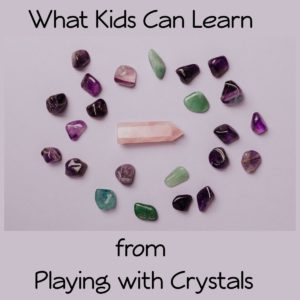
Check out these other articles about kids & nature: